A blog to illustrate the process, research and development of "Vision" - my third year work (first term).
Don't wanna be here? Send us removal request.
Text
Presentation

The tutors requested that we create a presentation (as well as a workbook, exhibition plan, mock-up and final prints) for the final critique. I will include each of my slides below so that it is recorded in my workbook as often files go missing.

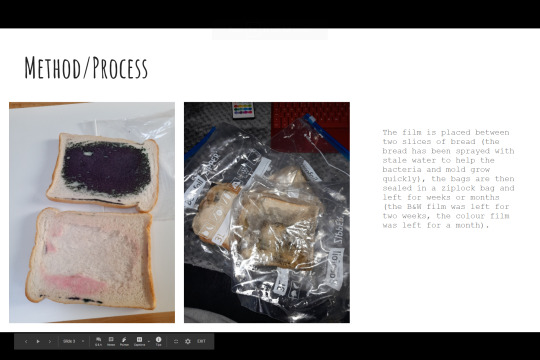
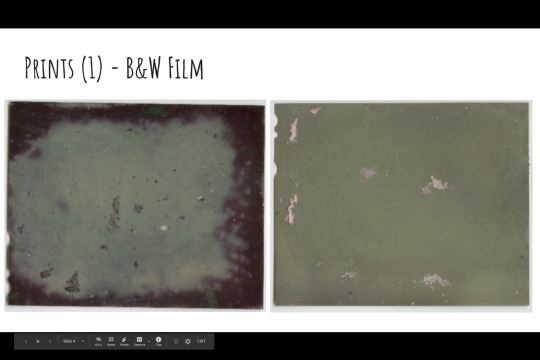
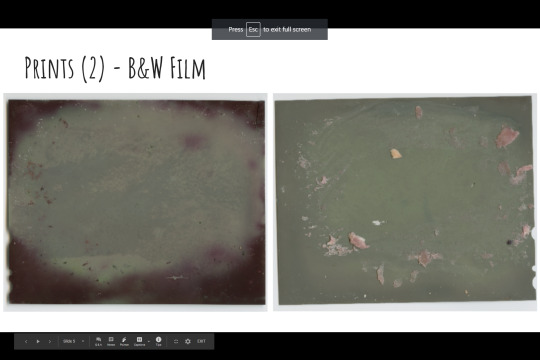
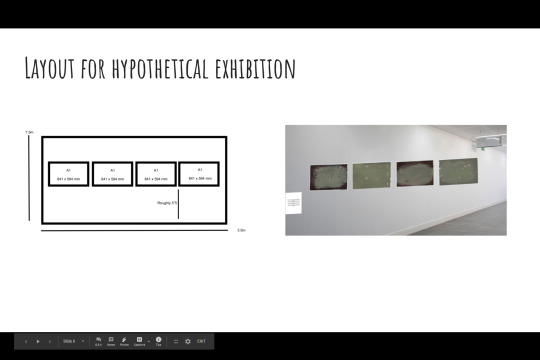
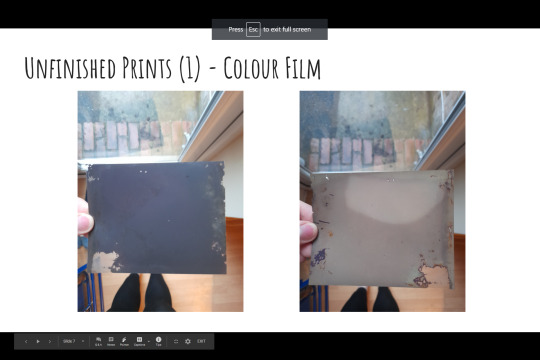
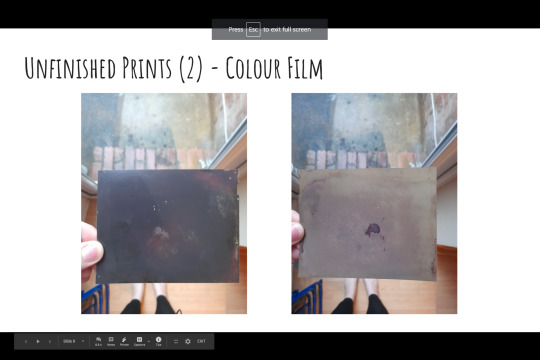



The presentation is simple but leaves room for discussion with my peers and my tutors. The slide merely contains pointers for myself so I can stay on track with the discussion.
0 notes
Text
Exhibition (3)
I would like to reflect on my rationale and original proposal as the project has completely changed since.
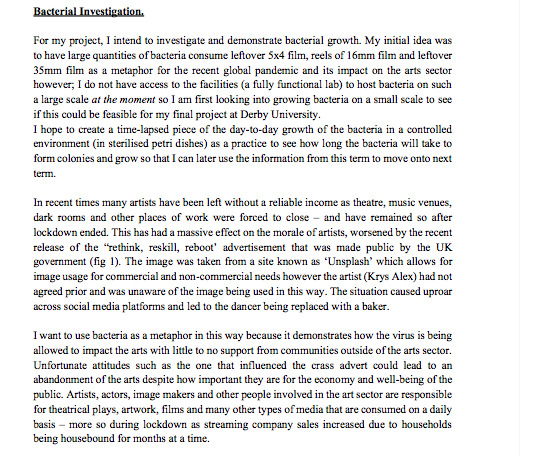
The original idea was to use bacteria eating film as a metaphor for COVID has affected the artist’s ability as well as to demonstrate the stupidity of the ‘rethink, reskill, reboot’ advent that very subtly urged artists to turn to different jobs outside of the creative arts for income.
My idea has advanced since then despite my own anger at the adverts and the audacity of the current government. Since my method had to change due to the microscopic camera not working out, the rationale needed to develop with it. The work now consists of a bread-camera (made through placing a piece of film between two slices of bread) as opposed to a microscope and the work is no longer a time-lapse (due to it being unsafe for continually open a bag of growing mold without the aid of a laboratory as it could cause respiratory issues for myself).
After a lengthy discussion with my tutors, I realized that COVID has not stopped artists creating work but rather forced them to adapt in different ways. Possibly using domestic items to create photography with. An example would be one of my fellow students creating a darkroom out of their spare bathroom, sealing it with thick black tape and a black shower curtain.
I decided that the rationale would domestic ways of taking images without the use of a ‘traditional’ camera or a developing process. The images will be made using household items such as bread, flour, toilet roll (particularly relevant because these are items that were unavailable during the first lockdown due to panic buying). I will still choose 5x4 film to be used as my medium for images because they can easily be reproduced for large scale images and I have a huge stockpile of them from my first year work - which means I’m using easily assessible equipment at home.
Thus my artist statement will be as follows...
Many artists and art students have felt the effects of the pandemic, as it has forced us to find different ways of continuing to make our work. Some artists have found ways of converting their rooms into temporary dark rooms and using household items to create artwork whilst they are unable to follow their usual routines. It also has limited many to a purely online service, as unfortunate as that is.
This work uses bread and 5x4 film to create images that reflect the artist’s experience of having to adapt their methods and way of image making during this time of privation. The images are made from the chemical reaction that happens between the bread as it decomposes and the chemicals on the film (silver halide), often resulting in a complete breakdown of the film’s emulsion. This process mimics that of the outside world, as our current must systems break down in order for us as a society to adapt, improve and overcome.
0 notes
Text
Exhibition Plan (2)
The next part of my exhibition plan is my risk assessment form, a risk assessment is used to keep both participants and audiences safe for the duration of an event.
My risk assessment is for my hypothetical exhibition, I have put down any hazards that may posses a potential threat to anyone involved in the event.
I have not included any electrical, water based or fire based hazards as I do not use them in my artwork however they would be accounted for in the risk assessment used by staff/engineers for the building or by students using such elements in their work.
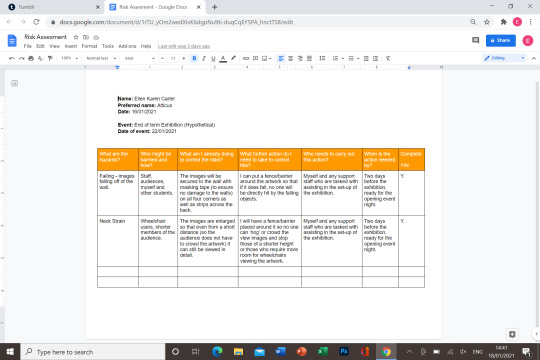
I have included the following hazards as these are the ones that stand out to me; neck strain/injury and injury caused by falling objects (the pictures falling off the wall). During said event, I would need to remain vigilant of these possible hazards throughout the event and I may need help to maintain them by having support staff nearby in case this happens.
0 notes
Text
Exhibition Plan (1)
I have put together a rough plan for the exhibition (now a hypothetic exhibition) of the work I have.
I will break down my plan into three segments;
- (1) The plan for exhibiting my work.
- (2) The risk assessment.
- (3) The artist’s statement.
Below I have included my original plan and the possible exhibition plans I thought of when I started this project. My final plan greatly differs from my original because the project had evolved since the beginning of the term either due to a change in equipment or a drastic change in method due to the limitations of the COVID rules.
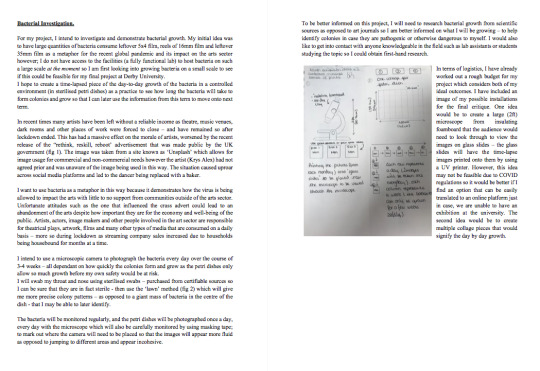
I will present the current scans I have produced as my final work as I have no way of scanning the new film to add to the finals. I have four finals currently that I am pleased with, if I were exhibiting them then I would have printed them as A1 images (This would work out to £16 each with the University prices, £64 in total).

The A1 size would allow for for the detail in the scans and they will allow for a better viewing for those with visual impairments due to the size of the images.
Here is a rough guide for the plan, including measurements of the area, the height of the images and the size of the area I would be working with.
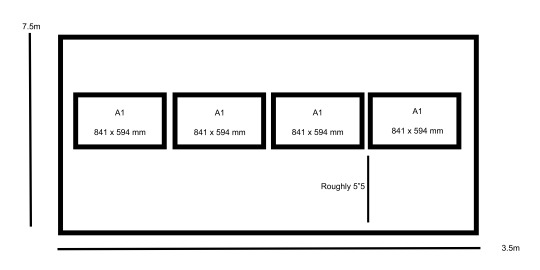
The images will be places at 5″5 as this is typically ‘eyelevel’ for a majority of people according to the average height of adults.
Whilst I understand that those using wheelchairs may have difficulty with this as it may cause neck strain for them, this is another reason for the size as the details in the image can be viewed at a small distance without forcing wheelchair users suffer any injuries or strain injuries.
I have also pieced together how the exhibition could look using photoshop. Whilst my skills are crude, it does demonstrate how it would look if it were mounted on a wall.

As you can see the quality of the images is not the same resolution as a TIFF file ought to be, these are screenshots of the images I took. I do not currently have access to my TIFF files as I am stranded in a different part of the country to the rest of my supplies and hard drives at the moment.
0 notes
Text
Alexey Kljatov (Artist 12)
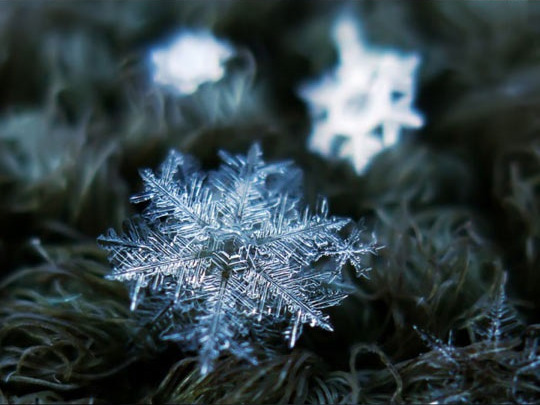

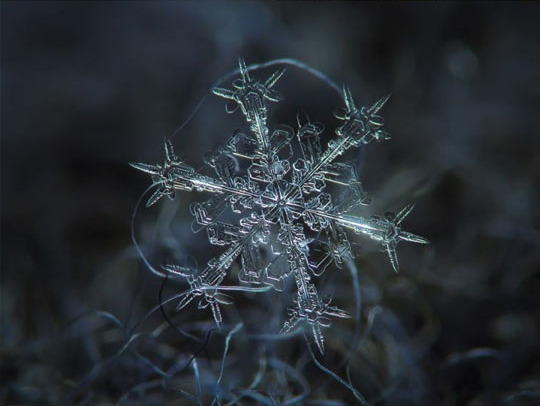
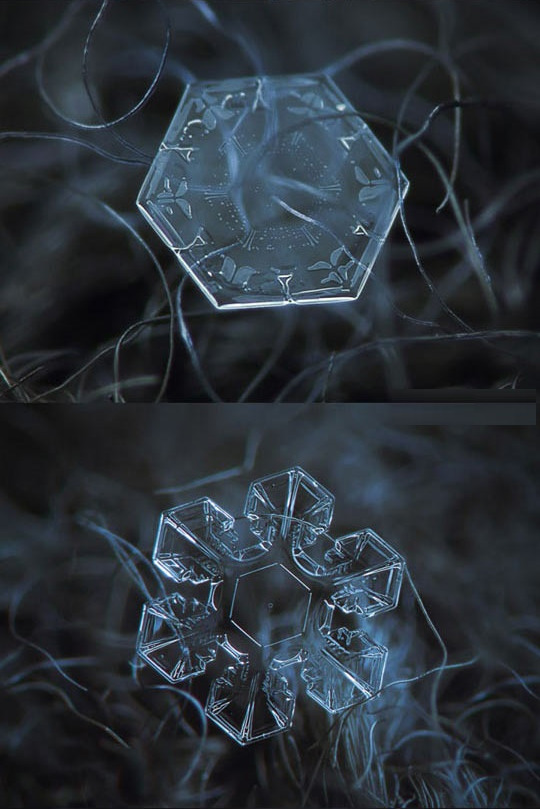
Who is Alexey Kljatov?
Alexey Kljatov is a photographer who has a big passion for photographing snowflakes, he sells the images as mugs, wall art ect to earn money to fund the continuation of the hobby.
His work was also featured in various publications such as Huffington post, Fox News and even NASA.
Where did I find them?
I actually found them through a post that appeared on the blog’s dashboard, someone posted the up-close images of snowflakes as well as the homemade camera and then someone commented the artist’s website in which he explains everything about the rig as well as how to make it yourself.
Why are they relevant?
I found him relevant because of his homemade rig, he puts together a camera in a relatively simple manner which is easy to follow (he provides instructions and a diagram) which allows those who may not be able to afford equipment such as a microscopic camera or even a microscope the ability to capture a small object in such detail.
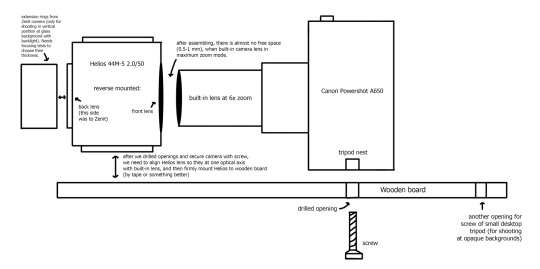
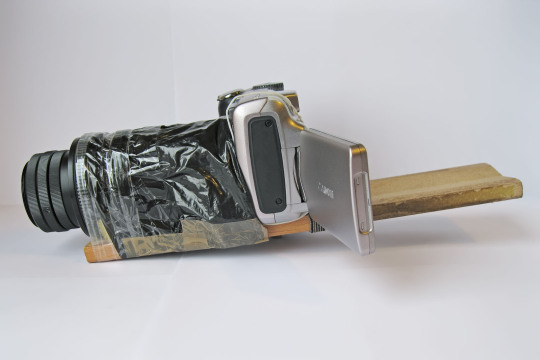
Relevant Links
- Tumblr Post
- Website
0 notes
Text
Unorthodox Cameras
I became curious to see if anyone else had attempted to create “home-made” cameras (using everyday domestic items or household items). I cannot be the first person to have stumbled upon this and there had to have been more sophisticated examples of cameras used as opposed to sandwiches.
I found Brendan Barry who a UK based artist that uses household objects as the main base for the camera including; bread.
Who is Brendan Barry?
Brendan Barry is a UK based photographer who went on to found the Dartmoor Summer School of Photography or “Positive Light Projects”.
Barry believes transformation as a key tool to a photographer, from transforming ordinary household objects into cameras or transforming environments into picturesque settings for scenes.
Where did I find him?
I found him on Instagram, through @exposurephotofestival as they follow his photography page and I decided to look for inspiration on my project through their network.
Why are they relevant?
I found him relevant mainly because of his creative way of using household objects to take pictures as perhaps this could be a new explorative direction for my final year work next term as the mold can be limiting at times and it would allow me to be more involved with making images again as I have felt rather removed from the process recently.
Their work...
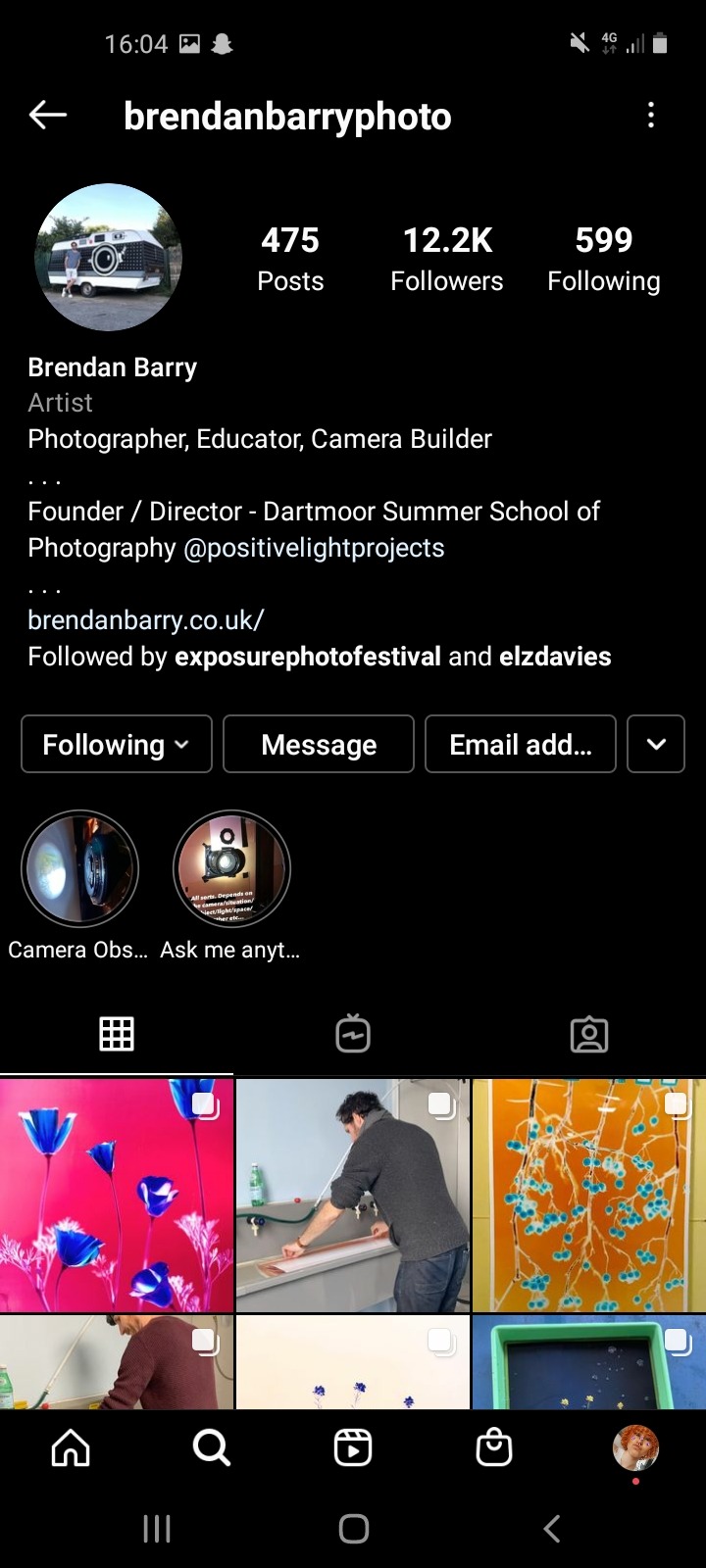
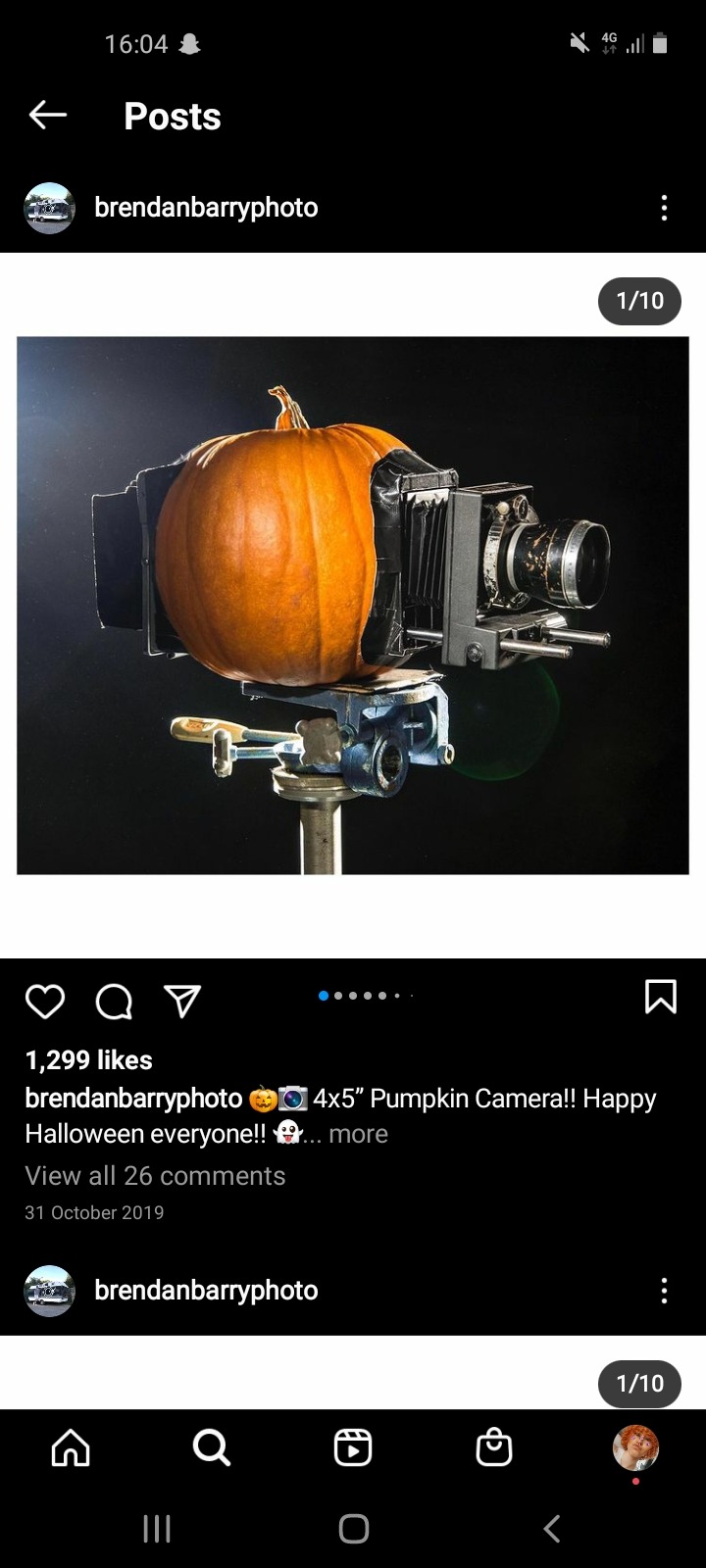
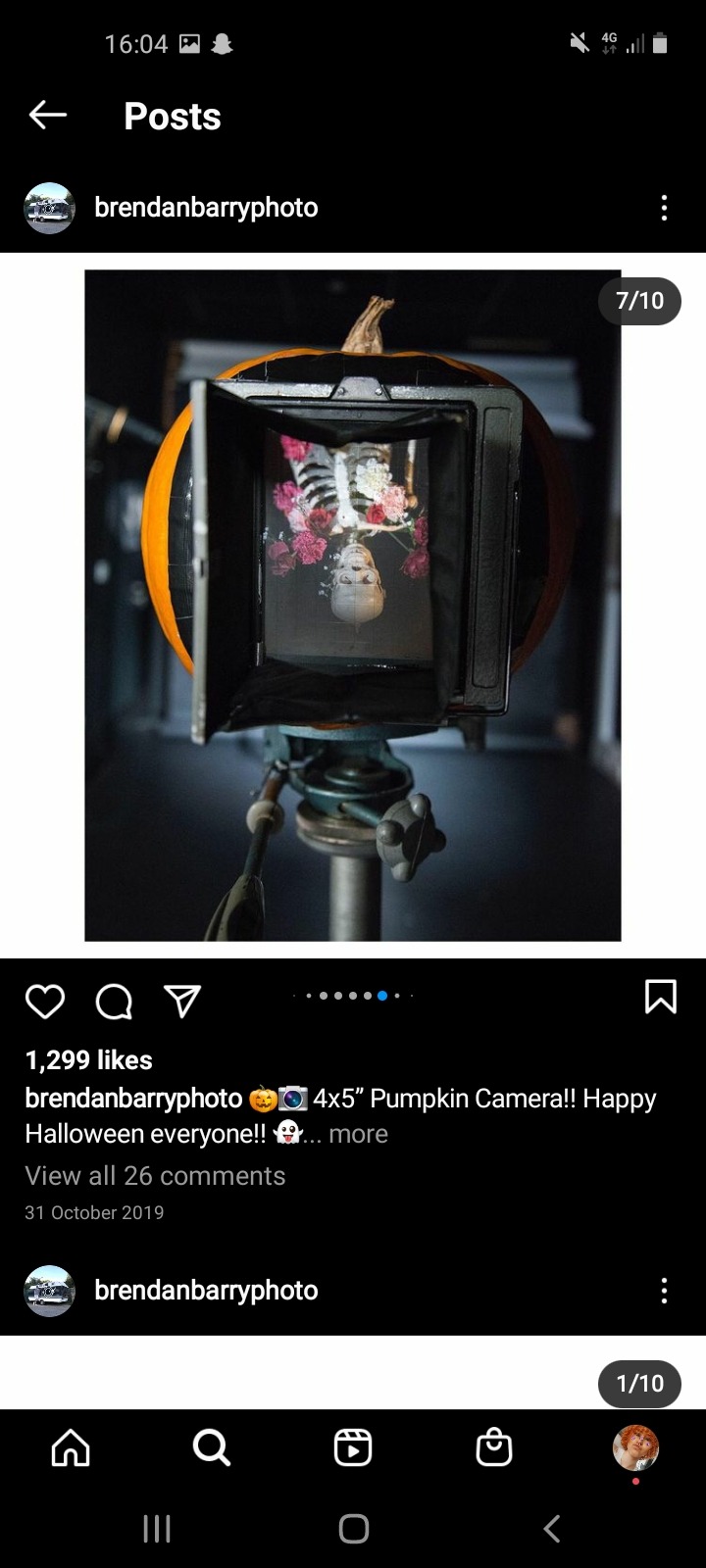
The first example is his ‘pumpkin’ camera. The pumpkin has been hollowed out completely and has been fitted with the front lens and back end of a 5x4 camera (Barry specializes in large format). The artist even includes a view into the fact that the camera works, showing what will appear on the film through the viewfinder.
His work is also shown on “PetaPixel”.
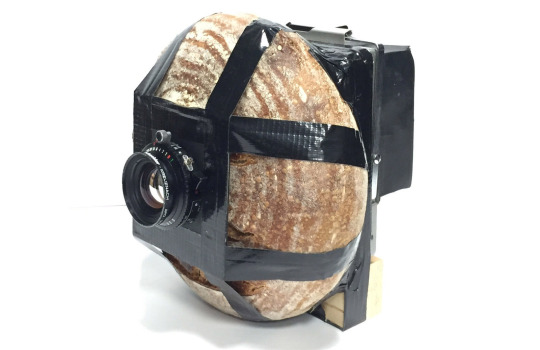
This is the camera that he made from a loaf of bread, sealing any holes with strong tape so that the image wouldn’t be affected by outside light or ‘fogged’. I am tempted to pursue a method like this next term however I am unsure if I would be able to take apart a 5x4 camera in order to do this nor would I be able to find a way to incorporate mold into this however, this is next terms issue.
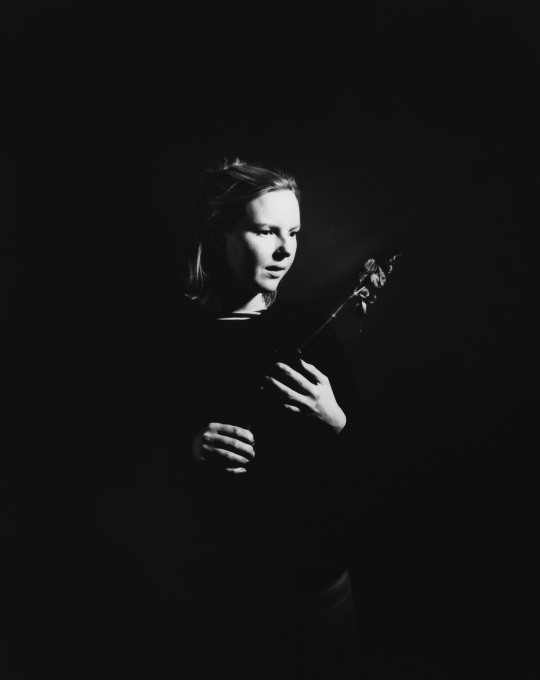
This is the result of using the bread camera, the image is particularly dark and very highly contrasted BUT it proves that an image cane be taken using bread or an item similar to this.
Relevant Links
- PetaPixel
- Instagram
0 notes
Text
Bread-Cam (Part 2) Results
As mentioned in Bread-Cam (Part 2), I kept 5x4 colour film in bread sandwiches to be covered in mold. My original plan was to wait until the 18th of January when I would be able to go to the university to scan the film however due to the university having to make changes to the schedule (a third lockdown was announced and the university warned students not to return and closed the campus until the 25th), this will no longer be possible.
(The images I will include of the film will be nowhere near the quality of the scans as I have no access to any photographic facilities where I am currently.)





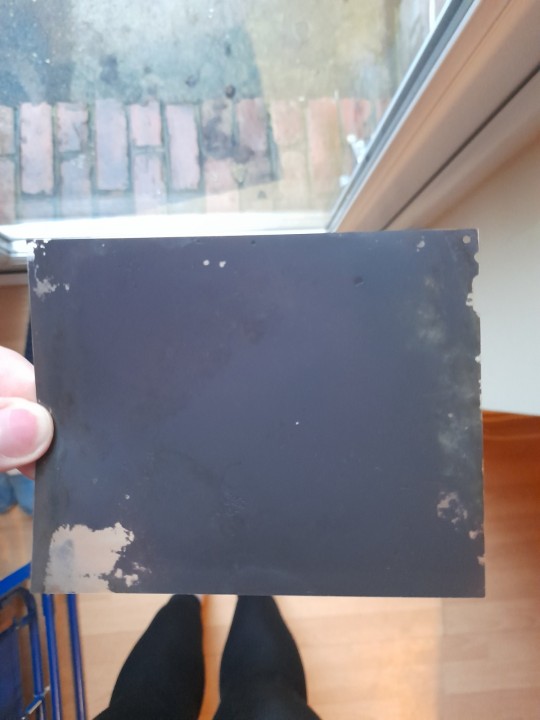
The mold has managed to strip the chemicals from the surface of the film is a far more drastic manner than the black and white film that was previously used. The chemicals has also created beautiful red/green/grey galaxy patterns on one side whilst also burning/stripping the underside of the film.
To compare...
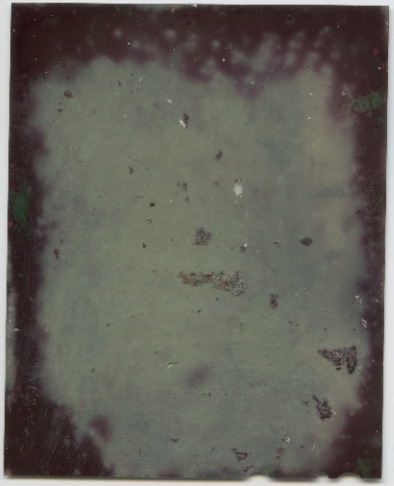

The colour film had a longer period to be ‘eaten’ by the mold but the results vastly differentiate, one would assume that the black and white film had longer due to the almost complete breakdown of the chemicals on the film.
Perhaps when returning to this idea for next term, the black and white film would be preferable as it creates visually more visceral results.
0 notes
Text
Secondary Hiatus
I took a temporary leave from the project due to another death within the family, as well as the lockdown being enforced again.
My dissertation has been handed in and my blog is now my priority until the final critique on the 22nd of January.
0 notes
Text
Battery Acid
Whilst I am looking at natural substances such as mold and bacteria and how that affects film, I did come across something curious.
As Christmas approaches, I was the unwilling party sent into the loft to retrieve the Christmas decorations and - as many do - I came across old stuff of mine such as some old consoles. I immediately became curious and desperate to play the old games and use the controllers again but the controllers were left in the loft with batteries still inside. The batteries had spilled acid all over the interior and exterior of the controllers, destroying them completely however the markings and patterns of the chemical burns were fascinating - not unlike the pumpkin mold or the mold in my plant pots.
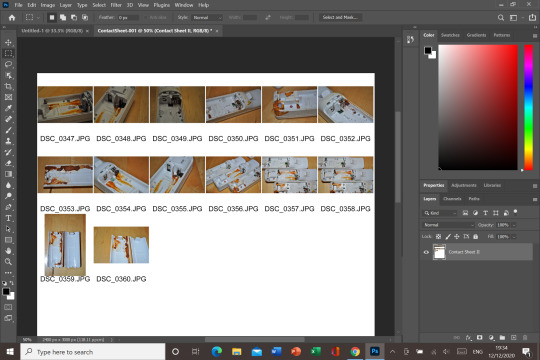
These images WILL NOT be used as part of my final work however, I find them relevant in terms of research. The battery acid is not a natural substance but it works in a similar way to my previous test subjects (mold and bacteria) as it eats away at whatever it comes into contact with. It is also comparable on the basis that it is ‘activated’ by water as bacteria and mold need moisture to survive and damp/moisture is what causes the battery acid to leak out of the batteries.
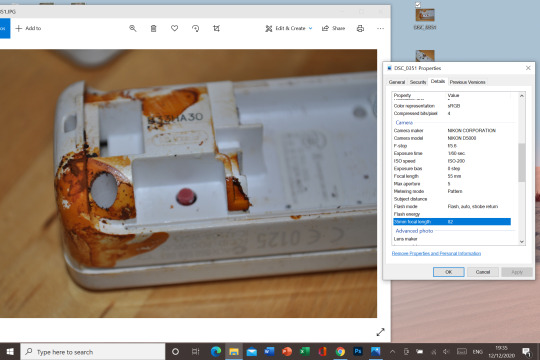
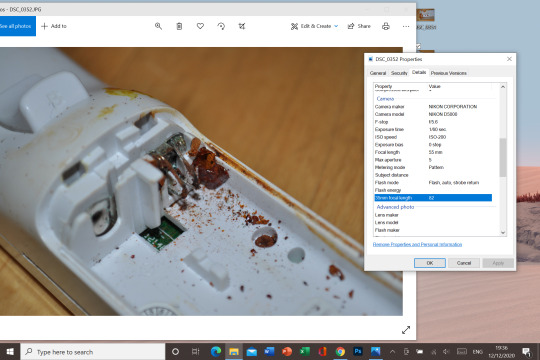
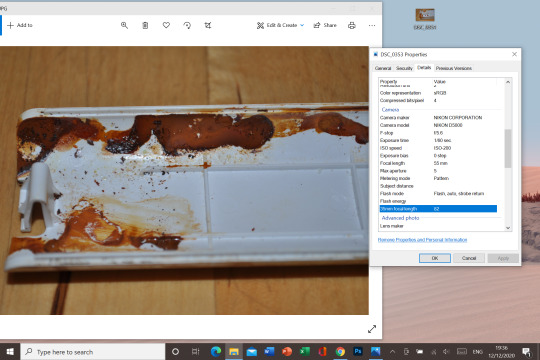
I have included a contact sheet of the images I took before I had to dispose of the controllers and clean the area they were in. I have also included the settings of a few of the images in the place of a camera log.
0 notes
Text
Bread-cam (Part 2)
As I mentioned in “Scanning (’bread-cam’)”, I will be continuing with using bread to make images. I was very kindly donated some colour 5x4 film by a fellow student so that I may see how colour film would be affected as opposed to the black and white film I was already using.
I hypothesize that the film will react differently due to the difference in chemical makeup.

I currently have three ‘bread-cam’s going at the moment. I arrived in Essex on the 18th of November which thankfully coincided with the sell-by date on white bread that was in the house so I was able to speed up the mold process by finding already out of date bread. I have not opened the bags since then and will aim to keep them going - if its safe to - until I return to Derby on the 18th of January to be scanned before the final critique.
(I used the method mentioned in “New Idea!” - I will include the video demonstration below for a refresher).
youtube
0 notes
Text
Scanning (’Bread-cam’)
Over the last few weeks, I have been using a process dubbed ‘bread-cam’ in which 5x4 film has been going moldy between two slices of bread - hence ‘bread-cam’. The film was left for a manner of days, each piece of film left for more days than the last.
Before leaving to go home to Essex, I took the opportunity to scan the film in the universities’ facilities (Epson V850 Pro scanner).
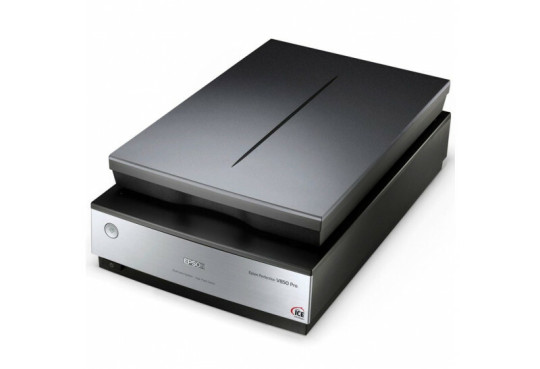
Here are the results:

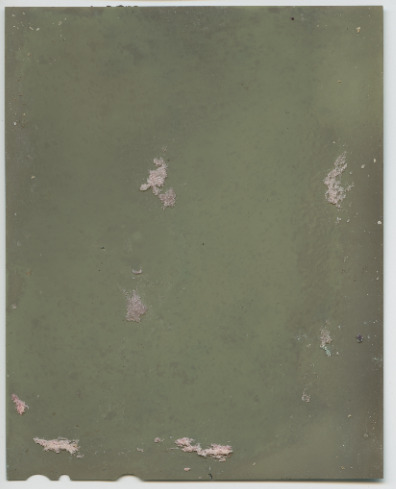
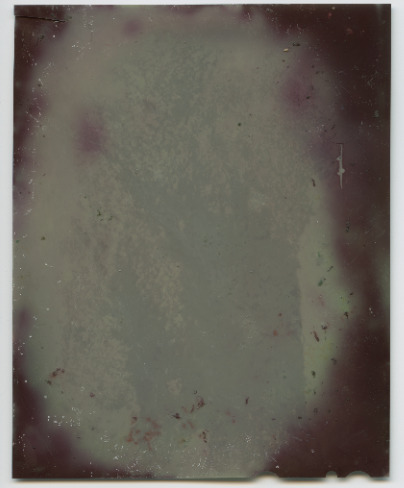
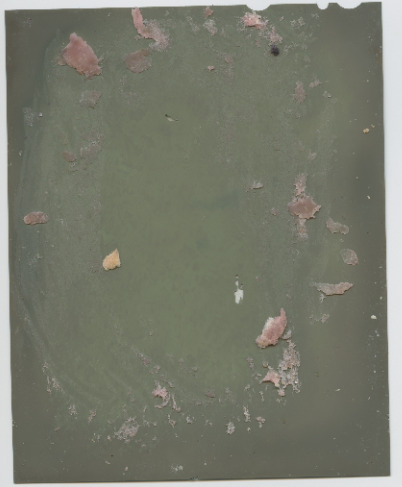
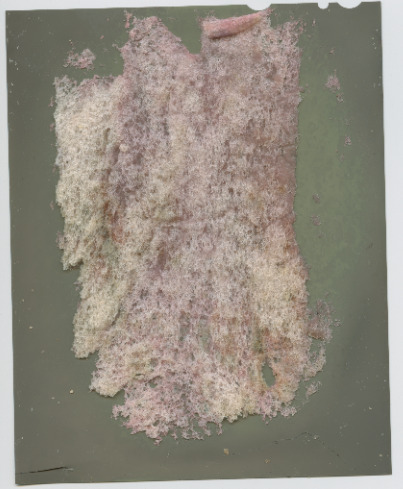
Again, Tumblr won’t allow me to include TIFF files in my posts so these are screenshots taken on a MAC so I am still able to share the results despite the drop in clarity and resolution. I scanned both sides of the film, one side containing a pink-ish sample of the bread mold and the other with the blue-ish sample of mold from the other slice of bread (the result of a chemical reaction with the chemicals on the film and the chemicals in the bread).
I am quite enamored by the results, the fact that the bread has literally leeched the chemicals from the film and stained it with the mold is amazing. I am curious to see what other food stuffs might do to film which lead to my new rationale for the project:
By using items that were unobtainable during lockdown (bread, flour, toilet roll ect), I will create images that reflect the times of privation we as a country - and a world - have experienced in 2020. I will allow 5x4 film to be consumed by whatever grows, crawls and lives off these household ‘essential’ items over the period of days, weeks and perhaps a month - if time permits - and scan the results.
References
- ‘Bread-cam’
- ‘Bread-cam’ results
- Epson V850 Pro Scanner
0 notes
Text
Scanning (Petri Dishes)
As I mentioned in a previous post, I wanted to scan the results of my project’s experiments (the petri dishes and ‘bread-cam’). I used the Epson scanners that are in the university, being careful to clean the devices that came into contact with the mold or any other part of the project.
I will be doing two posts for my results, one for the petri dishes and one for the ‘bread-cam’ film scans.
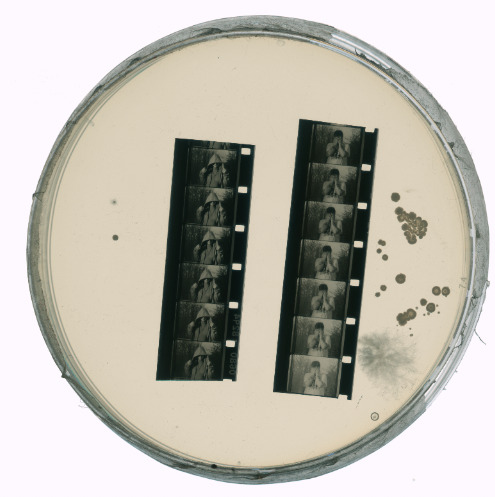
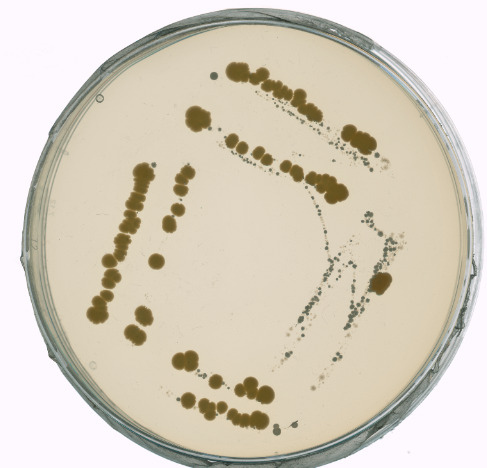
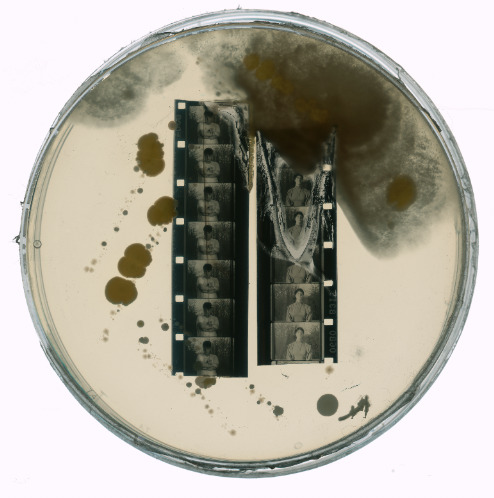
These images were made using a V850 Pro Epson scanner, using the Silverfast software on a Mac computer. I had to enhance the resolution of the images to allow me more options later on for installation and exhibition purposes, I put the resolution to 3200ppi (meaning that if I wish, I could print these images to an A2 or A1 size without compromising the quality of the scans). Whilst this is beneficial at a later stage, this did cause issues in terms of storing the pictures (each images roughly being 6gb) which thankfully I was able to store on an external hardrive and back up on two memory sticks.
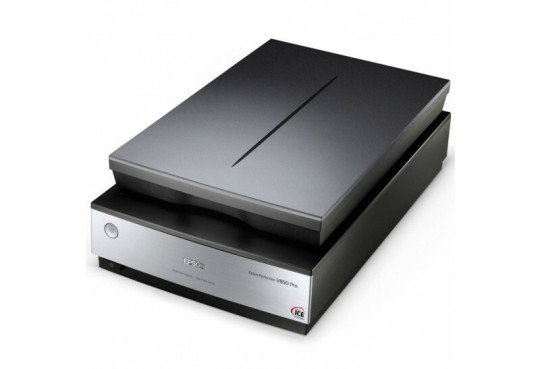
As shown in the scans, it is very clear that the bacteria is able to fully consume the film (stripping it of the colour pigment which removes the image on the film). Whilst these images are screenshots (Tumblr won’t allow me to post TIFF files) taken on a Mac, it is still strikingly detailed as even the small fibers on the bacteria colony (upper right section) are still visible.
I have decided that I will not be carrying on with petri dishes as the time taken to grow them, sustain them as well as the cost of all the equipment needed outweighs the gain from using them. The petri dishes were left for over a month with film inside and the bacteria only managed to damage a small section of the film, I do not have months left in this project so the results would not be ready in time for my hand-in date.
References
- Epson V850 Pro scanner
- Silverfast software
- ‘Bread-Cam’ results
- Petri Dish results
Another interesting element to mention would be that the swab taken from my throat produced more bacteria colonies than the swab taken from my nose (throat swab petri dish is the third image, the first image is the nose swab petri dish).
0 notes
Text
Temporary Hiatus
As you can clearly tell by the timestamps on the posts, I have been inactive for quite a while on the blog. I decided to take a break as to help me focus on my dissertation as I was struggling with that for quite a while however regular posts will resume as I am now back on task with both Vision and my dissertation.
0 notes
Text
Petri Dish Results
At the beginning of the project, I set out to photograph petri dishes with a microscopic camera and watch it grow, image by image in a time-lapse. However, the images did not piece together well as seamlessly as I’d hoped and this caused me to feel disheartened about it so I switched to other methods as demonstrated in these posts:
1. Bread-cam
2. New Idea
3. Changing equipment
I still wanted to use bacteria in the project and investigate how it would affect images or film for example as I stated in my proposal. I wanted to use it as a metaphor for how COVID had eaten away at the artist experience and our ways of making work.
I left a petri dish to grow by itself with two strips of film inside and I will also be scanning an image from it so I have a digital, permanent copy to use if I wish later. This is the result:
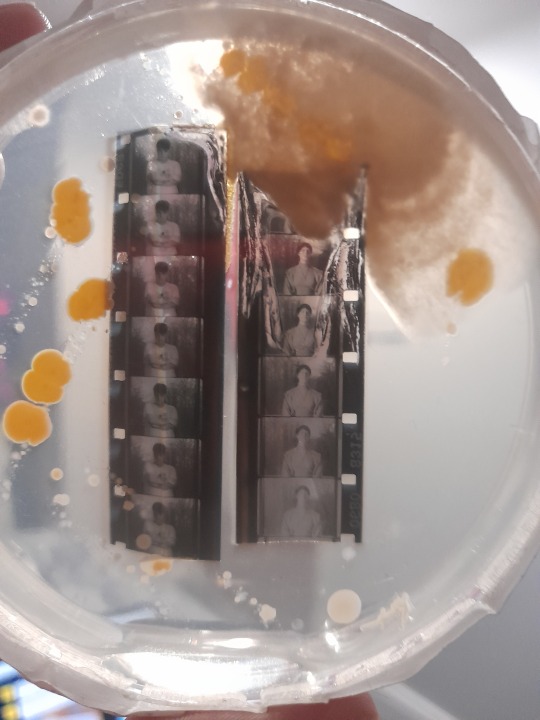
As you can see the film is being destroyed gradually by the bacteria, streaking its way down the film strip. The images are being erased gradually by the bacteria and discolouring the edges of it in yellow/cream dots.
I am worried at the liquid that has collected in the lid of the petri dish as this could prove to be an issue later when scanning them but I shall cross that bridge when I come to it.
The way it’s moving down the film strip, its reminiscent of the old horror film, “The Blob” (1958) in which a large mass of gelatinous slime consumes people that it comes into contact with. I don’t know why my brain has made this connection, perhaps it’s the lockdown getting to me.
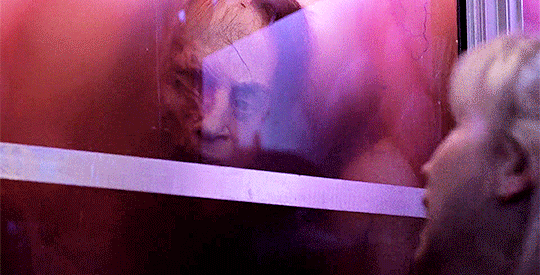
0 notes
Text
Bread-Cam results
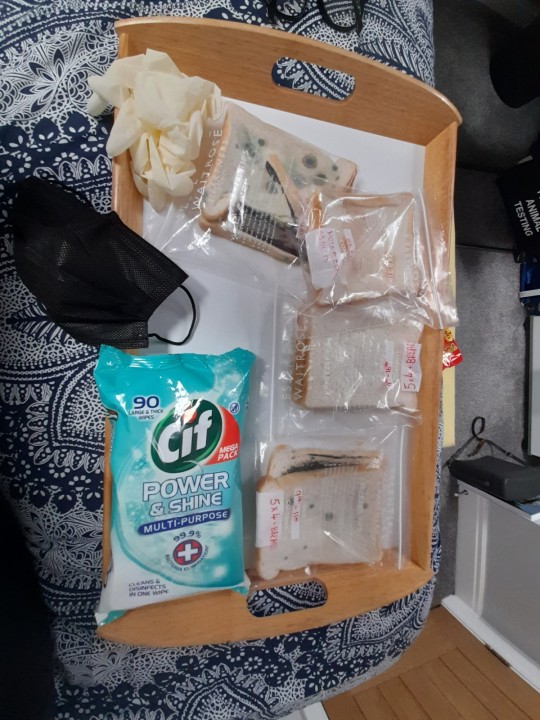
I removed each piece of film from their moldy sandwiches, each one had been in there for a different amount of days (2, 4 and 7 days) so I decided to wait until they were all finished to put the post together otherwise it would have been difficult to link them together.
Before I opened the bags, I needed to put a few safety measures in place for my own protection.
1. Open the windows in the room - this allows for better ventilation there’s less chance of me breathing in the mold spores.
2. Wear a mask (particularly one that covers the mouth and nose) - this is a second line of defense against the spores.
3. Wear gloves - this stops me from getting any of the mold on my skin as I pick apart the bread or handle the film.
4. Use anti-bacterial gel and anti-bacterial wipes - to clean all surfaces and the gloves themselves to stop any contamination of surfaces and devices (the service tray, my mobile phone) used whilst going through the process.

When I opened the bread up, it appeared as though the chemicals from within the film had bled onto the film and dyed the mold as it’s grown. Whether this is caused by a chemical reaction taking place between the bread, the stale water or the film itself, I don’t know.
The film has been stripped of its outer layer of gelatin by the mold ‘eating’ it away which leaves the strange patterns on it. During the removal of it from the bread, some of it was scratched away and has left visible scratches on the surface turning the film clear in certain parts.


I don’t think I will be developing the film as I doubt anything will come of it due to the chemicals ‘bleeding’ onto the bread however, I will scan them instead so I can have a digital copy of the results of my work that may be used in the final product. The scans will allow me to zoom in and study the details; whether there are striation patterns on the film or whether there will be something far more interesting up close.
By scanning the film, it will also remove any chance of me holding onto a biohazardous object that may cause myself to become ill or even spread to others, like COVID has.
When I do scan it, I will need to place acetate underneath it so that the mold does not damage the scanner or contaminate it in any way. The acetate will not hinder any scan results due to its transparency but will act as a protective barrier between the film and the scanner parts.
0 notes
Text
Bread-Cam

After a tutorial with Phil, I realized I’m struggling to produce work and I need to ‘broaden my horizons’ to other outlets.
I currently have 2 on-going experiments; petri dishes and the moldy bread/still life display case. However it will be a few weeks before I can use them to create images so I need something more immediate for the interim critique.
It was suggested that I use bread as my camera and place film between two slices for a extended amount of time and see what effect it has on the film - this is a tenuous thread however it still symbolizes the link between COVID and the art and how it is affecting the artist experience.
I will be sending the film off to one of the university technicians so they can develop the film for me whilst I’m waiting for my session on the 20th of November in which I can use the university facilities.

In terms of method for this, I will be using the same method I mentioned in “New Idea” where a video was embedded demonstrating the method.
I will be keeping the bread above the radiator to keep the mold environment warm, this location also allows for minimum light so the film won’t be blasted with light 24/7 and create just a blank image since they’ll be there for more than an extended amount of time.
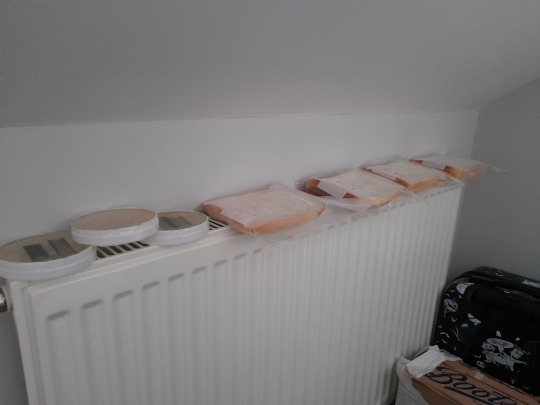
0 notes
Text
Household Mold

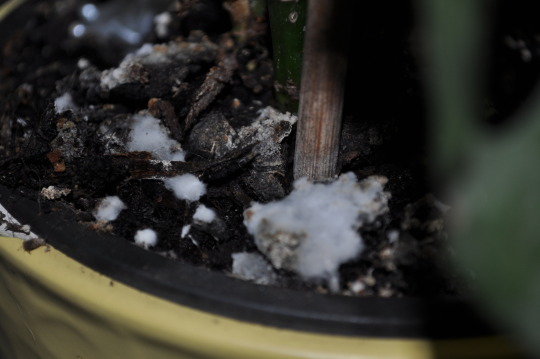

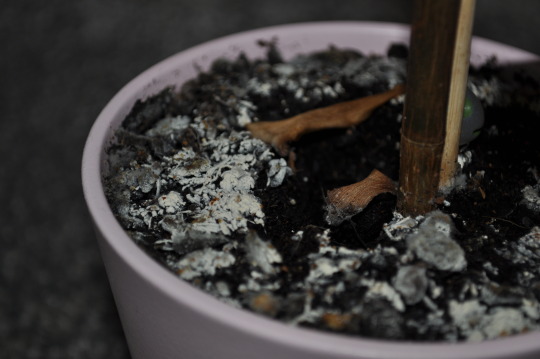
Thoughts behind the images...
With the rapid approach of the interim critique and the panic-induced fear of not creating work at a fast enough pace, I began looking at mold that can be found within the spheres of the household - due to the second lockdown limiting the places I can travel to.
As shown in the images, small white snowy clumps of mold can grow on soil known as an ‘saprophytic fungus’. If the mold appears on houseplants then it’s a clear sign that the soil conditions are not ideal, it could mean; poor drainage and poor air ventilation for the plant. Whilst for the most part, the mold can be harmless, it can slowly kill the potted plant. The leaves will start to turn tan/brown and die off at which point they become host to the mold spores that will allow it to grow and spread.
The mold is almost parasitic in the way it lives, spreading and consuming its host however there is no symbiotic relationship between the two as there would be with a traditional parasite. The mold is a naturally occurring organism that is slowly consuming and spreading with high risk to whoever contracts them much like COVID. It survive on almost any surface; doorknobs, train seats, tabletops and many other easily accessible surface used by many people. It rather sinister when you start to think more about the similarities between the virus and other microbes (mold, fungus etc.).
Camera Log (settings used in the images)
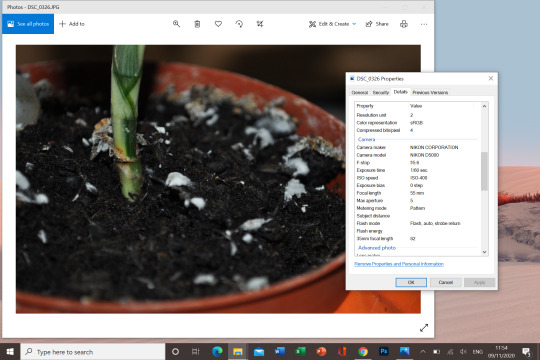
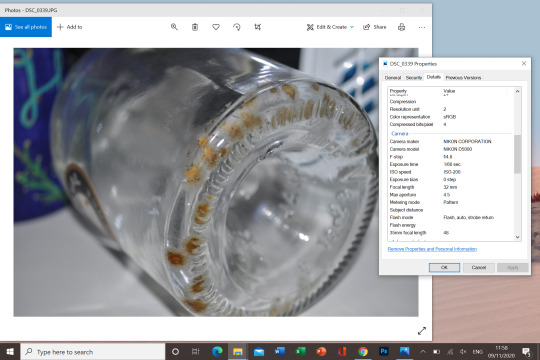
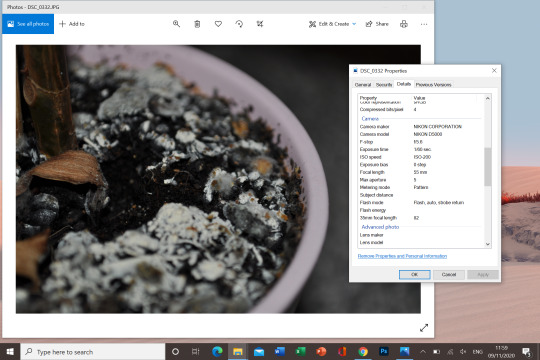
Contact Sheet
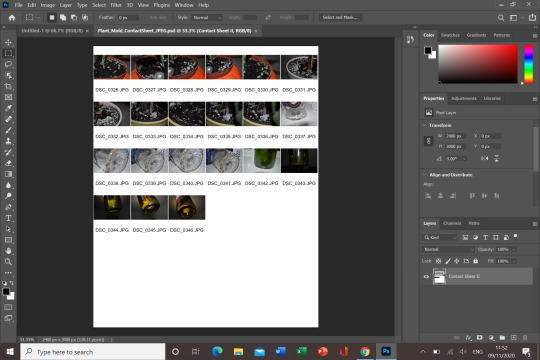
Relevant Links
- Home Guide
- This Interests Me
0 notes